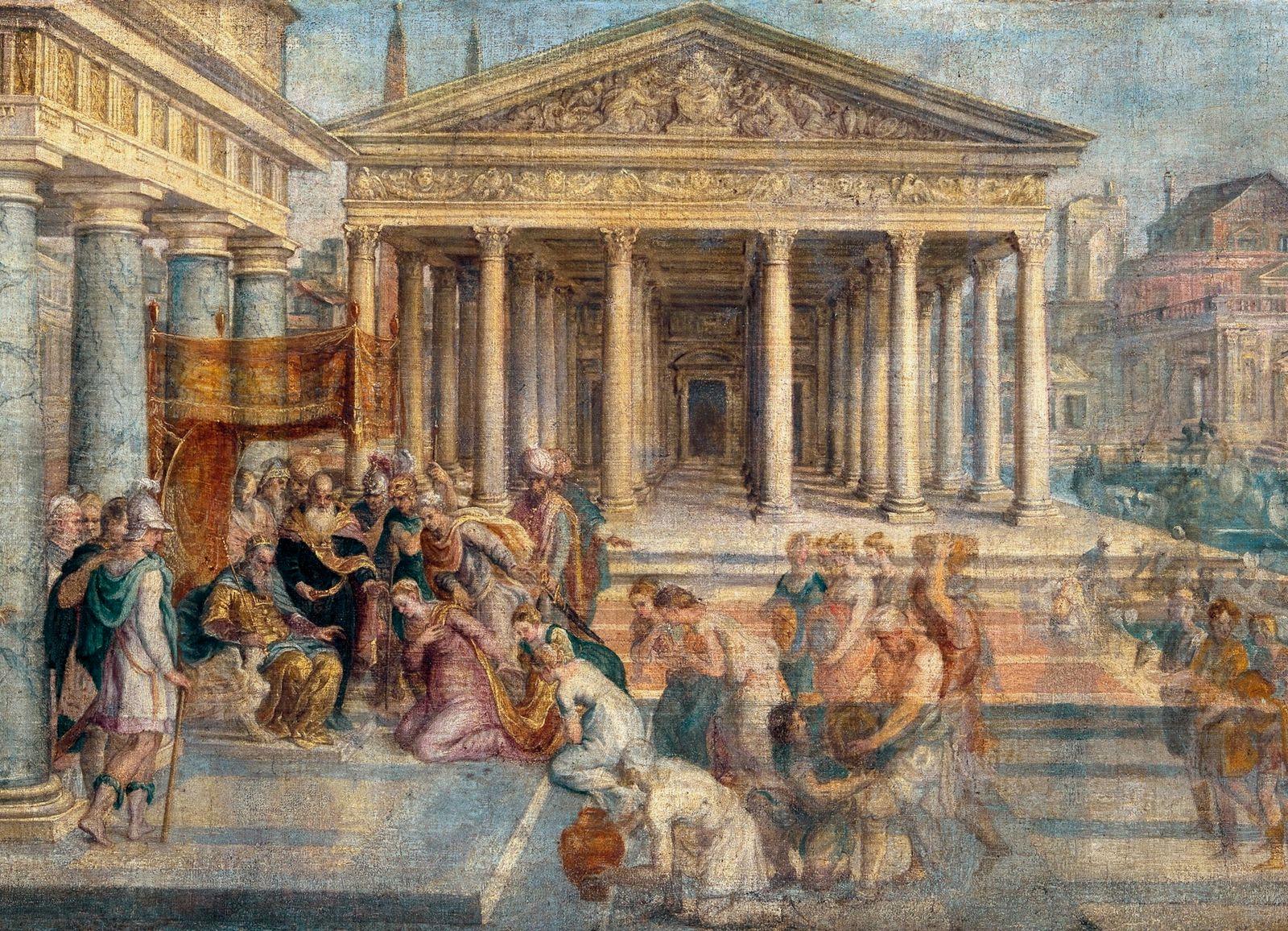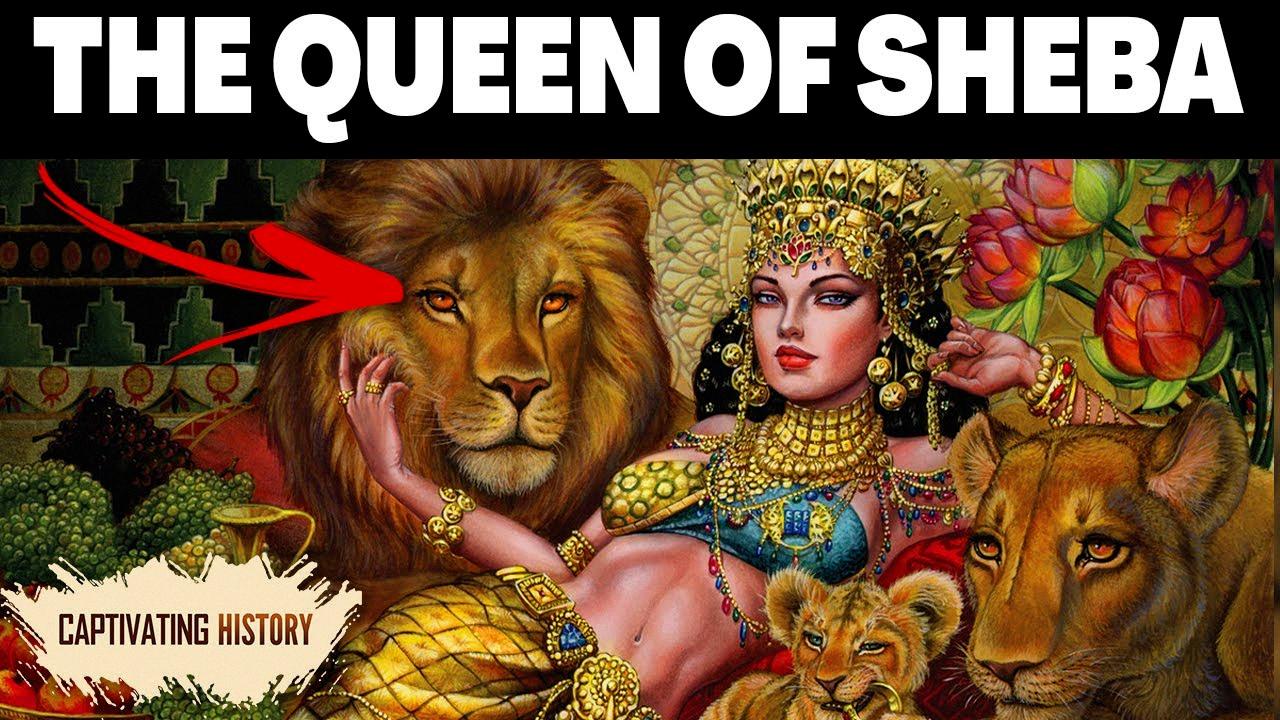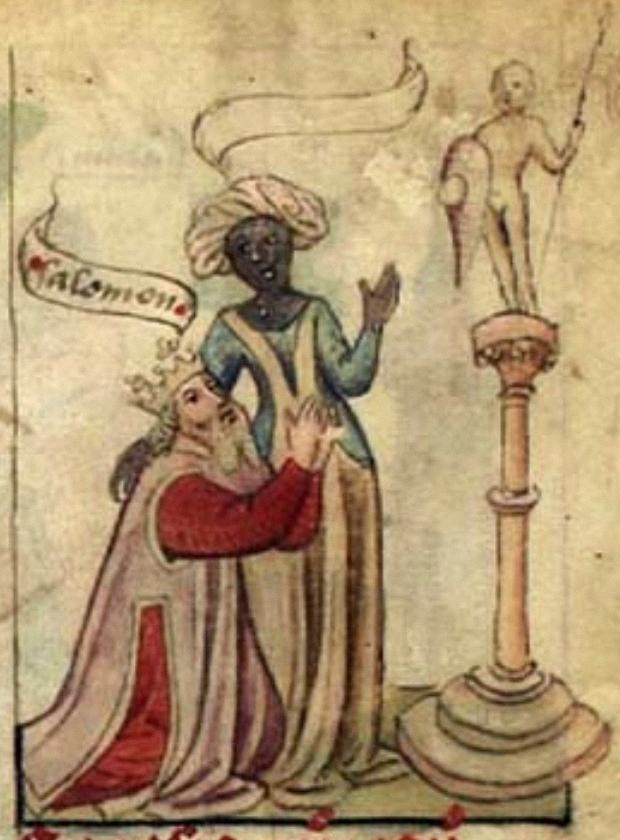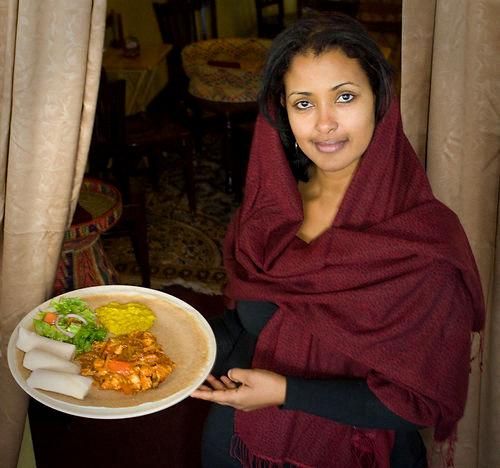The Queen of Sheba, also known as Makeda, continues to captivate our imaginations to this day. While there is little physical evidence to prove her existence, she remains a fascinating figure in history and mythology.
According to the Bible, the Queen of Sheba ruled a wealthy kingdom and traveled to Jerusalem to meet King Solomon, bringing gifts of gold, spices, and precious stones. The encounter between the two rulers has been depicted in art and literature throughout the centuries, and the Queen of Sheba has become a symbol of power, beauty, and wisdom.
While the exact location of Sheba remains uncertain, many believe that it was located in modern-day Yemen or Ethiopia. In fact, the ancient kingdom of Aksum in Ethiopia claims to be the home of the Queen of Sheba and even has a palace and a well that are said to have belonged to her.
Despite the lack of concrete evidence, the legend of the Queen of Sheba continues to inspire people around the world. She has been portrayed in films, books, and even music, with artists such as Bob Marley and Beyoncé referencing her in their lyrics.
But the Queen of Sheba is more than just a cultural icon; she was a historical figure who ruled over a powerful kingdom. Her story reminds us that women have always played important roles in shaping our world, even in male-dominated societies.
The Queen of Sheba remains a fascinating figure in history and mythology. While we may never know for sure if she tuly existed, her legacy lives on through art, literature, and popular culture. She serves as a reminder of the power and wisdom of women throughout history and inspires us to continue striving for equality and justice in our own time.
The Queen of Sheba in the Present Day
As an AI language model, I cannot provide a specific answer to this question as there is no definitive or widely accepted evidence of the existence of the Queen of Sheba. The Queen of Sheba is a legendary figure from ancient times, and her story has been recounted in various religious texts and historical accounts. However, no physical evidence has been found to prove the existence of the queen, and her true identity and location remain a mystery. Therefore, there is no Queen of Sheba today, at least not in the literal sense.
Source: nationalgeographic.co.uk
The Existence of the Queen of Sheba
The existence of the Queen of Sheba, also known as Queen Bilqis, is a topic of debate among historians and scholars. She is primarily known from the Bible, specifically the books of Kings and Chronicles, as well as from the Quran. According to these accounts, the Queen of Sheba was a wealthy and powerful ruler who visited King Solomon in Jerusalem to test his wisdom and engage in trade with him.
However, there is no concrete evidence to prove the existence of the Queen of Sheba outside of these texts. Some historians believe that the character of the Queen of Sheba was based on a real historical figure, possibly a queen or ruler from the ancient kingdom of Saba in Yemen. Others argue that she was a fictional creation meant to convey a moral lesson or represent an archetype of a powerful and wise female leader.
In the end, the mystery surrounding the Queen of Sheba remains unsolved. While there is no concrete proof of her existence, her story continues to captivate and inspire people around the world, making her an enduring figure in both religious and cultural history.
The Fate of Queen Sheba
Queen Sheba, also knwn as the Queen of Sheba, is a legendary figure in history and religion. According to ancient Ethiopian texts and the Bible, she was a powerful queen who ruled over the kingdom of Sheba, which is believed to be located in modern-day Yemen. The Queen is said to have traveled to Jerusalem to meet King Solomon, bringing with her gifts of gold, spices, and precious stones.
Much of her story is shrouded in myth and legend. Some accounts suggest that she returned to her kingdom and ruled for many years, while others claim that she converted to Judaism after her meeting with King Solomon and became a follower of his teachings.
In terms of her death, there are also differing accounts. Some say that she died peacefully in her sleep, while others claim that she was struck down by a bolt of lightning. One popular legend suggests that she was buried in Ethiopia, and that her tomb can still be seen in the city of Axum.
While the details of Queen Sheba’s life and death may be unclear, her legacy as a powerful and influential queen continues to inspire people around the world.
The Ethnicity of the Queen of Sheba
The ethnic background of the Queen of Sheba is not definitively known, but she is believed to have come from the Kingdom of Sheba, which was located in the area that is now Ethiopia and Yemen. The queen is often depicted as African, and many Ethiopians claim her as a prominent figure in their history and culture. Some scholars have also suggested that she may have had Jewish or Arabic ancestry, as her kingdom had trade connections with these regions. wile the exact ethnicity of the Queen of Sheba remains a subject of debate, she is widely recognized as an important figure in the history and mythology of Ethiopia and the surrounding regions.
The Appearance of the Queen of Sheba
The Queen of Sheba is historically believed to have been a woman of African descent, and therefore would have had dark skin. As a ruler and wealthy individual, she would have dressed in fine clothing and adorned herself with jewelry. However, there is no definitive description of her physical appearance, as no portraits or images of her have been found. It is important to note that many western depictions of the Queen of Sheba have portrayed her as white, which is not historically accurate.
Source: youtube.com
The Religion of the Queen of Sheba
The religion of the Queen of Sheba is not definitively known as there is limited information available about her beliefs. However, she is mentioned in both the Jewish and Islamic religious texts. In the Jewish text, she is described as a wise and wealthy ruler who visited King Solomon to test his knowledge and wisdom, and in the Islamic text, she is depicted as a queen who converted to Islam after encountering the prophet Solomon. Therefore, it is possible that she practiced either Judaism or Islam, or perhaps a different religion altogether.
The Queen of Sheba’s Relationship with Solomon and Possible Offspring
According to Ethiopian tradition, the Queen of Sheba, also known as Makeda, did indeed have a child with King Solomon of Israel. This child was named Menelik I, who is believed to have founded the Ethiopian dynasty and ruled as the first emperor of Ethiopia. The story goes that the Queen of Sheba traveled to Jerusalem to meet King Solomon and was impressed by his wisdom and wealth. After spending time with him, she returned to her kingdom and lter gave birth to Menelik I. The Ethiopian dynasty claims to be descended from this royal lineage, and the story of the Queen of Sheba and King Solomon’s relationship has been passed down through generations in Ethiopian folklore and religious texts.
The Son of Queen Sheba
According to the 14th-century national epic, Kebra Nagast, Queen Sheba’s son was Menelik I. He is known as the founder of the Solomonic dynasty of Ethiopia, which was named after his father, the biblical King Solomon of ancient Israel. Menelik I was believed to have been conceived during Queen Sheba’s visit to King Solomon in Jerusalem and was later brought up in Ethiopia by his mother. The story of Menelik I and his lineage is an important part of Ethiopian history and is still celebrated today.
The Location of Sheba Today
The Kingdom of Sheba, an ancient civilization mentioned in various religious texts and historical records, is believed to be located in modern-day Yemen. Archaeological findings and historical sources have helped to confirm that the Kingdom of Sheba was indeed situated in the southern part of the Arabian Peninsula, in what is now known as Yemen. This region was known for its flourishing trade routes, agricultural production, and cultural exchange, and the legacy of the Sheba civilization can still be seen in the architecture, language, and customs of the Yemeni people today.
Source: jwa.org
The Burial Place of Bathsheba
Bathsheba, also known as Queen Sheba, is a biblical figure believed to have reigned over the ancient Kingdom of Sheba. According to legend, she was a wealthy monarch who visited King Solomon in Jerusalem and was impressed by his wisdom and riches. While there is no definitive account of where Bathsheba was buried, there are several theories and legends surrounding her final resting place. One such theory suggests that Bathsheba was buried in a small village called Oke-Eiri in Ijebu-ode, Ogun State, Nigeria. This village is said to be the location of a hidden burial ground that is believed to be the final resting place of the biblical queen. However, there is no concrete evidence to support this claim, and it remains a subject of debate and speculation among scholars and historians. Other legends suggest that Bathsheba was buried in Yemen, Ethiopia, or even Israel. Despite the uncertainty surrounding her burial place, Bathsheba remains an important figure in biblical history and continues to inspire fascination and curiosity among people around the world.
Who is the Owner of the Queen of Sheba?
The Queen of Sheba restaurant is owned by Alem Gebrehiwot. Alem is a prominent figure in the Portland food scene, and her restaurant has gained a reputation for serving authentic Ethiopian cuisine. Located at 2413 Northeast Martin Luther King Jr. Boulevard in Portland, Queen of Sheba has been a staple in the community for many years. Alem takes great pride in her restaurant and is known for her warm hospitality and dedication to providing her customers with a memorable dining experience.
The Marriage of Solomon and the Queen of Sheba
According to a later midrashic tradition, Solomon did marry the Queen of Sheba, and she bore him a son named Ben Sira. However, this tradition is not supported by any biblical text and is considered a later development in Jewish literature. The only biblical account of the Queen of Sheba’s visit to Solomon descibes her as coming to test his wisdom and knowledge, and there is no mention of any marriage or offspring resulting from their encounter. Therefore, while the midrashic tradition portrays Solomon and the Queen of Sheba as husband and wife, there is no historical or biblical evidence to support this claim.
The Descent of Ethiopians
Ethiopians are descended from several different ethnic groups, including the Cushitic, Semitic, and Omotic peoples. The Cushitic peoples are believed to have been the earliest inhabitants of Ethiopia, and are related to othr Horn of Africa populations such as the Somali and Oromo people. The Semitic peoples, who arrived in Ethiopia around 1000 BC, include the Amhara and Tigray ethnic groups, and are related to other Semitic populations such as the Eritreans and Yemenis. The Omotic peoples, who are related to the Nilotic peoples of southern Sudan and Uganda, are found primarily in southwestern Ethiopia. In addition to these groups, there are also small populations of Nilo-Saharan peoples in the western regions of Ethiopia. the Ethiopian population is diverse and reflects the many different ethnic groups that have migrated to the region over thousands of years.
Source: queenofshebalouisville.com
The Meaning of I Am Black But Comely in Scripture
The scripture “I am black but comely” is found in the Song of Solomon 1:5. It is a statement made by the Shulamite woman, who is the main character in the book. The phrase means that the woman is Black or dark-skinned, but still beautiful and attractive.
This verse has been significant in discussions about race, beauty, and identity. It affirms that Blackness is not a hindrance to beauty or worth, and that God values and celebrates diversity in His creation.
Some interpreters have also seen this verse as a metaphor for the church or for the relationship between God and His people. In this interpretation, the woman represents the church or the believer, who may be marginalized or oppressed in society, but is still beloved and cherished by God.
“I am black but comely” is a profound statement that affirms the beauty and vaue of Blackness, even in a world that often devalues and discriminates against Black people.
Conclusion
The Queen of Sheba remains a captivating figure in world history, religion, and folklore. Her existence and the location of her kingdom continue to be a matter of debate and speculation. Despite the lack of concrete evidence, the Queen of Sheba’s legacy endures through varios cultural and religious traditions. Her legendary visit to King Solomon and her reputation as a wise and wealthy ruler have inspired numerous works of art, literature, and music. Today, the story of the Queen of Sheba continues to fascinate and intrigue people around the world, serving as a reminder of the enduring power of myth and legend.




